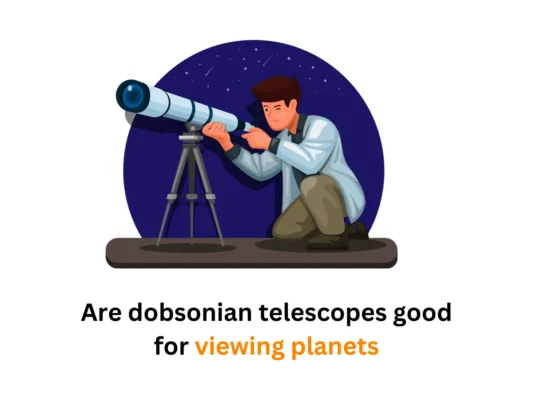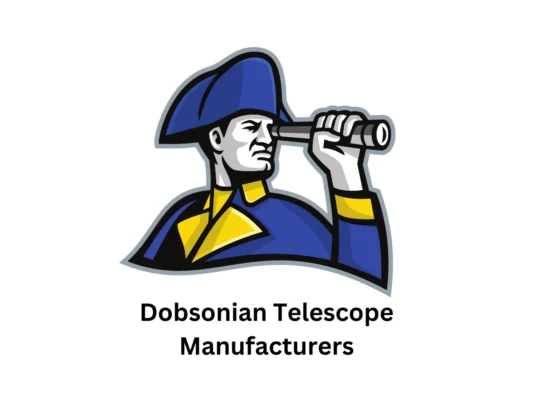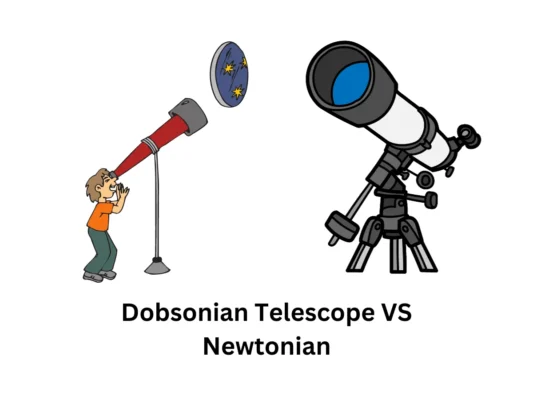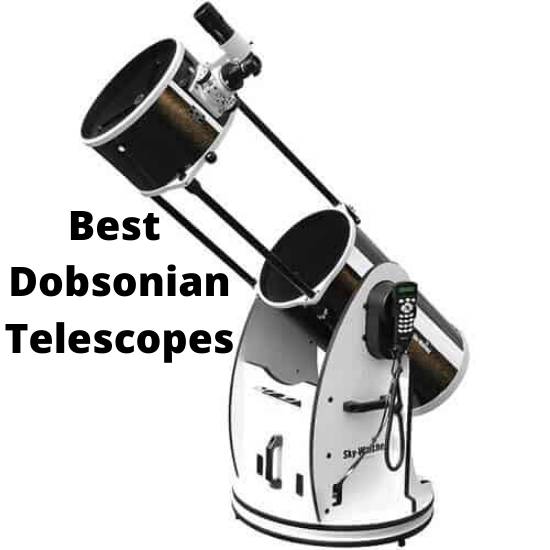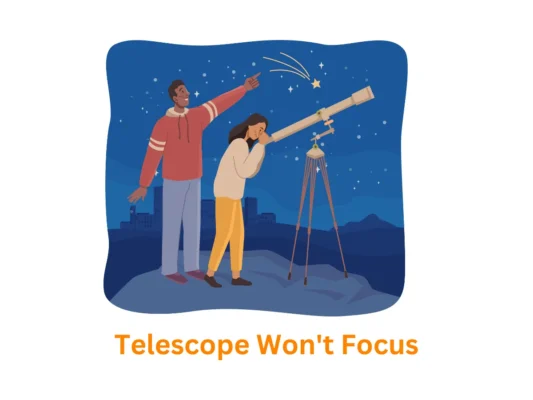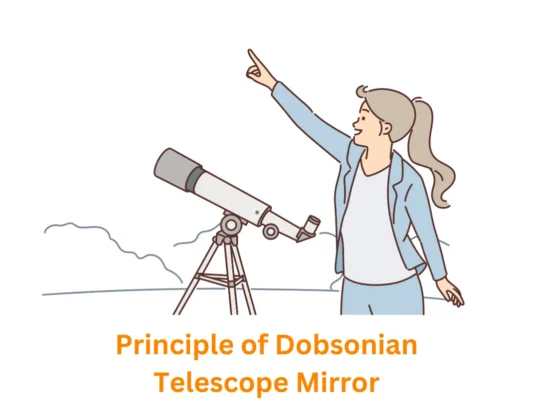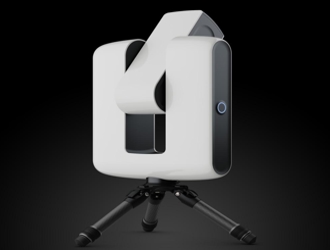The Best Dobsonian Telescopes are a reflector-type telescopes. These was invented by John Dobson in the 1960s. It is mounted on an altazimuth platform and uses simple, inexpensive materials to achieve high magnification without being extremely bulky or hard to manage. The name “Dobsonian” comes from the inventor (John Dobson), and it refers specifically to Newtonian telescopes which were designed with this type of mount.
There are many different types of Best Dobsonian Telescopes available, but they all share these same basic characteristics: no tracking required; low cost; ease of construction; portability; large aperture size, and simplicity (few moving parts). There are several different types of dobsonians available today. And we will cover All types of Dobsonian Telescopes.
Best 6 Inch Dobsonian Telescope
[affiliatable id=’146375′]
This article will review the top 6 inch Best Dobsonian Telescopes on the market. It is an overview of their features and specifications, as well as a buyer’s guide to help you make your decision. These are not just any telescope; they are quality instruments that can be used for various purposes including astrophotography, terrestrial viewing, or comet hunting. We hope this article will not only enlighten but also inspire you about these incredible telescopes.
CELESTRON NEXTAR EVOLUTION 6″ is the best telescope for beginners and experts alike. They have an automated NextStar series of telescopes that can track any object in your sky with pinpoint accuracy through technology so easy to use you’ll feel like a pro. With this particular model, it comes equipped with Go To mount making aligning three stars or galaxies as simple as pie (literally).

Specifications:
- Brand: Celestron
- Optical Design
- Focal length:1500mm
- Aperture:150mm
- Weight: 36 kg 300 g
- Mount Type: Alt-Azimuth
- Motorized: Yes
- Model:12090
- Dimension: 23.11
- Batteries Included: Yes
- Rechargeable Battery: No
[joomdev-wpc-pros-cons disable_title=”yes” wpc_style=”wppc-view1″ title_tag=”H3″ title=”Title Here” pros_title=”Pros” cons_title=”Cons” button_text=”Get it now” disable_button=”yes” button_link=”” button_link_target=”_SELF” button_rel_attr=”dofollow” verdict_text=””][joomdev-wpc-pros]
- Eliminate the need for a laptop.
- Improved motors.
- Capture images of deep-sky objects.
- Easy to use and portable.
[/joomdev-wpc-pros][joomdev-wpc-cons]
- Not suitable for experienced Astronomers.
[/joomdev-wpc-cons][/joomdev-wpc-pros-cons]

Sky-Watcher’s Classic Dobsonian is a beginner scope that will provide users with a large aperture and easy functionality. It has higher quality than similar scopes, such as Schmidt Cassegrains or refractors because it uses an affordable design for bright detailed visual observation using the simple mechanism in comparison to other types of the telescope which may be more costly but not as efficient at magnifying objects on Earth’s surface up close.

Specifications:
- Brand: Sky Watcher
- Brand Model: Traditional Dobsonian
- Focal length:1200mm
- Aperture:152mm
- Weight: 33 Pounds
- Mount Type: Alt Mount
- Lens Coating: Fully Multi Coated
[joomdev-wpc-pros-cons disable_title=”yes” wpc_style=”wppc-view1″ title_tag=”H3″ title=”Title Here” pros_title=”Pros” cons_title=”Cons” button_text=”Get it now” disable_button=”yes” button_link=”” button_link_target=”_SELF” button_rel_attr=”dofollow” verdict_text=””][joomdev-wpc-pros]
- View the night sky without any distortion.
- Get a bright, bold viewing experience.
- It’s easy to use.
[/joomdev-wpc-pros][joomdev-wpc-cons]
[/joomdev-wpc-cons][/joomdev-wpc-pros-cons]

The 6SE NexStar Computerized Telescope is a news release from Celestron, and it offers users the ability to easily navigate through their favorite constellations while getting an amazing view of Saturn with its great magnification powers. Alongside this high-powered monocular viewer, there’s also WiFi connectivity so you can open up all sorts of educational resources on things like star names or constellation patterns – something that will surely help enhance your stargazing experience.

Specifications:
- Brand: Celestron
- Model:11068
- Focal length:1500 mm (59”)
- Aperture:150 mm (5.91”)
- Weight: 21 Pounds
- Mount Type: Altazimuth Mount
[joomdev-wpc-pros-cons disable_title=”yes” wpc_style=”wppc-view1″ title_tag=”H3″ title=”Title Here” pros_title=”Pros” cons_title=”Cons” button_text=”Get it now” disable_button=”yes” button_link=”” button_link_target=”_SELF” button_rel_attr=”dofollow” verdict_text=””][joomdev-wpc-pros]
- Portable.
- Lightweight.
- Easy to use hand control.
[/joomdev-wpc-pros][joomdev-wpc-cons]
[/joomdev-wpc-cons][/joomdev-wpc-pros-cons]

The Celestron NexStar 130SLT is the perfect scope for stargazers on a budget. It offers more than 40,000 stars and galaxies with pinpoint accuracy that can be matched up to your current eyepieces or any others in its database of 4 gigabytes.
The computerized Star Locating Telescope (or “Comet”) by Celestron makes it easy to find anything you’re looking at night-time through; whether they are within 50 light-years from Earth – which was recently possible using this particular model’s all-new feature called Search Pro integration-, somewhere far away like outside our solar system, even across entire neighborhoods inside city centers where many people never go out.

Specifications:
- Brand: Celestron
- Model: Celestron NexStar SLT Series
- Focal length: 650mm (26”)
- Aperture:130mm (5.12”)
- Weight: 11.4 Pounds
- Mount Type: Altazimuth Mount
- Power Source: Solar Powered
[joomdev-wpc-pros-cons disable_title=”yes” wpc_style=”wppc-view1″ title_tag=”H3″ title=”Title Here” pros_title=”Pros” cons_title=”Cons” button_text=”Get it now” disable_button=”yes” button_link=”” button_link_target=”_SELF” button_rel_attr=”dofollow” verdict_text=””][joomdev-wpc-pros]
- Allows you to see the most distant objects in space.
- Locate your favorite celestial object with ease.
- Become a stargazer for life.
[/joomdev-wpc-pros][joomdev-wpc-cons]
- Need a collimator before it is first used.
[/joomdev-wpc-cons][/joomdev-wpc-pros-cons]

The XT6 is the perfect beginner’s telescope because of its stable mount, easy-to-operate features and affordability. With its excellent light grasp this reflector should be at the top of any list for anyone wanting more than what their smartphone or tablet can offer.

Specifications
- Brand: Orion
- Focal Length: 1200mm
- Ratio: f/8.0
- Eye Piece: Plossl
- Lens Diameter: 150 mm
- Mount Type: Alt Mount
- Lens Coating Description:Aluminum & Silicon Dioxide
- Focal Length Description:1200 millimeters
[joomdev-wpc-pros-cons disable_title=”yes” wpc_style=”wppc-view1″ title_tag=”H3″ title=”Title Here” pros_title=”Pros” cons_title=”Cons” button_text=”Get it now” disable_button=”yes” button_link=”” button_link_target=”_SELF” button_rel_attr=”dofollow” verdict_text=””][joomdev-wpc-pros]
- Simple and affordable
- It’s easy as pie.
[/joomdev-wpc-pros][joomdev-wpc-cons]
- Need to clean them regularly.
[/joomdev-wpc-cons][/joomdev-wpc-pros-cons]

The Star Blast 6i Intelliscope Orion 27191 Reflector Telescope is a great device for beginners and experienced astronomers. The IntelliScope Computerized Object Locator allows you to explore the night sky with sharp views of moon, Jupiter and more,as well as deep space objects such nebula galaxies at its focal length of 750mm (f/5). This reflector telescope weighs just 23 lbs making it portable enough to bring along anywhere you go.

Specifications
- Brand: Orion
- Eye Lens: Plossl
- Lens Diameter: 150mm
- Item Weight:23.5 Pounds
- Lens Coating Description: Aluminum; Silicon Dioxide
- Focal Length Description:750 millimeters
[joomdev-wpc-pros-cons disable_title=”yes” wpc_style=”wppc-view1″ title_tag=”H3″ title=”Title Here” pros_title=”Pros” cons_title=”Cons” button_text=”Get it now” disable_button=”yes” button_link=”” button_link_target=”_SELF” button_rel_attr=”dofollow” verdict_text=””][joomdev-wpc-pros]
- Perfect gift for anyone who loves the stars.
- Get a closer look at the Moon and planets with this telescope.
- Ideal for hunting, camping, and tailgating.
- Weather-resistant.
[/joomdev-wpc-pros][joomdev-wpc-cons]
[/joomdev-wpc-cons][/joomdev-wpc-pros-cons]

Best 8 inch Dobsonian telescope
[affiliatable id=’146378′]
There are many different types of Best Dobsonian Telescopes on the market, but this article will review about Best 8 inch Dobsonian telescope selling models. The list includes their features and specifications as well as an introduction to help you decide which one might be right for your needs – whether it’s astrophotography or just looking at stars through a terrestrial lens.
The Meade Series 1000 instrument is an excellent choice for anyone looking to get the best possible views. With its large aperture, bright viewing experience, and low cost it’s hard not to see why this telescope has taken off.
The Pluto Observatory has found a new home for you with the Dobsonian. This lightweight and sturdy design are perfect to take on your next camping trip or scientific endeavor, while still being able to provide an intense astronomy experience. Not only does it have all of its accessories included in one package (including a 2-inch Crayford style focuser), but this telescope also comes at just under 20 pounds when assembled too – making transportation easy as pie. The max focal length of 1200mm will let users see even more than expected given what they are using their eyesight for.

Specifications
- Brand: Sky Watcher
- Brand Model: Traditional Sky Watcher 8 inch
- Mount Type: Alt-Alt-mount
- Lens Coating: Fully Multi Coated
- Aperture (mm): 203
- Focal Length (mm):1200
[joomdev-wpc-pros-cons disable_title=”yes” wpc_style=”wppc-view1″ title_tag=”H3″ title=”Title Here” pros_title=”Pros” cons_title=”Cons” button_text=”Get it now” disable_button=”yes” button_link=”” button_link_target=”_SELF” button_rel_attr=”dofollow” verdict_text=””][joomdev-wpc-pros]
- Perfect for viewing the moon, planets, and other celestial objects.
- Explore new worlds like never before.
- Exceptional viewing experience.
[/joomdev-wpc-pros][joomdev-wpc-cons]
- The quality of parts is low.
[/joomdev-wpc-cons][/joomdev-wpc-pros-cons]

The Orion 8945 SkyQuest XT8 Classic Dobsonian Telescope is the perfect telescope for beginners because of its easy to use design. The scope can be set up in minutes and has a large aperture that provides great views of the sky. It also features an 8 inch mirror with an aluminum coating that ensures images are bright, clear, and free from glare. This dashing telescope comes with two eyepieces which makes it easy to switch between viewing terrestrial subjects like birds or wildlife on land as well as celestial objects like galaxies and nebulae in space.

Specifications:
- Brand: Orion
- Color: Black
- Objective Lens Diameter: 203 Millimeters
- Lens Coating Description: Aluminum & Silicon Dioxide
- Focal Length: 1200 millimeter
- Focal ratio: f/5.9
- Eyepiece: Sirius plossl
- Mount type: Dobsonian
- Weight, fully assembled: 41.0 lbs.
[joomdev-wpc-pros-cons disable_title=”yes” wpc_style=”wppc-view1″ title_tag=”H3″ title=”Title Here” pros_title=”Pros” cons_title=”Cons” button_text=”Get it now” disable_button=”yes” button_link=”” button_link_target=”_SELF” button_rel_attr=”dofollow” verdict_text=””][joomdev-wpc-pros]
- Balanced and easy to use.
- Feel like an astronomer.
- Good aperture.
[/joomdev-wpc-pros][joomdev-wpc-cons]
- Red dot finder is in cheaper quality.
[/joomdev-wpc-cons][/joomdev-wpc-pros-cons]

skywatcher flex tube is a great choice for those who want the brightest and boldest views at an affordable price. With its innovative collapsible design, it also comes with patented tension control handles which allow you to move your scope around without worry about balance or precision 94% reflective mirrors ensure that there will be no ghosting when viewing surfaces such as planets in our galaxy.

Specifications:
- Brand: Sky-Watcher
- Model: S11700
- Objective Lens Diameter: 203 Millimeters
- Lens Coating Description: Multi-Coated
- Focal length: 1200mm
- Focal ratio: 5.9
- Eyepieces: Plossl
- Mount Type: Altazimuth Mount
- Weight: 27 Pounds
[joomdev-wpc-pros-cons disable_title=”yes” wpc_style=”wppc-view1″ title_tag=”H3″ title=”Title Here” pros_title=”Pros” cons_title=”Cons” button_text=”Get it now” disable_button=”yes” button_link=”” button_link_target=”_SELF” button_rel_attr=”dofollow” verdict_text=””][joomdev-wpc-pros]
- Sturdy and lightweight design.
- Get a bright bold viewing experience.
- Affordable and easy to transport.
[/joomdev-wpc-pros][joomdev-wpc-cons]
- Cradle will not be placed perfectly.
[/joomdev-wpc-cons][/joomdev-wpc-pros-cons]

Celestron Nexstar 8SE Computerized Telescope features iconic range tube technology design with updated technology and its latest features for amazing stargazing. whether you’re a beginner or expert observer. It has an 8-inch aperture that allows it to provide enough light-gathering power while retaining its compact form factor – making this telescope great for couples who want their private spot in which they can share observing together.

Specifications:
- Brand: Celestron
- Model Name: 11069
- Lens Diameter: 203 mm
- Mount Description: Alt Mount
- Power: Solar Powered
- Item Weight: 10.88 Kilograms
- Number of Batteries: 8 AA batteries required.
- Focal Length Description: 2032 millimeters
[joomdev-wpc-pros-cons disable_title=”yes” wpc_style=”wppc-view1″ title_tag=”H3″ title=”Title Here” pros_title=”Pros” cons_title=”Cons” button_text=”Get it now” disable_button=”yes” button_link=”” button_link_target=”_SELF” button_rel_attr=”dofollow” verdict_text=””][joomdev-wpc-pros]
- SkyAlign technology will get you aligned in minutes.
- Explore the universe with a sky simulation software download.
- You can easily take your telescope anywhere.
[/joomdev-wpc-pros][joomdev-wpc-cons]
- Little bit higher price than beginner telescopes.
[/joomdev-wpc-cons][/joomdev-wpc-pros-cons]

Our deluxe upgrade of the popular XT8 Classic Dobsonian features a range of key feature enhancements. Eye-catching metallic blue optical tube sits on top while adjustable altitude tension knobs make collimation easy without tools for those interested in high quality views from any position or viewing configuration, and it also comes with 11:1 fine focusing abilities which work extremely well.

Specifications:
- Brand: Orion
- Eye Piece: Plossl
- Lens Diameter: 203mm
- Telescope Mount: Alt Mount
- Lens Coating Description: Aluminum & Silicon Dioxide
- Focal Length Description: 1200 millimeters
[joomdev-wpc-pros-cons disable_title=”yes” wpc_style=”wppc-view1″ title_tag=”H3″ title=”Title Here” pros_title=”Pros” cons_title=”Cons” button_text=”Get it now” disable_button=”yes” button_link=”” button_link_target=”_SELF” button_rel_attr=”dofollow” verdict_text=””][joomdev-wpc-pros]
- Powerful telescope for larger objects like the moon and planets.
- More accessories are included to get you started with stargazing right away.
[/joomdev-wpc-pros][joomdev-wpc-cons]
- Comes in two separate packages.
[/joomdev-wpc-cons][/joomdev-wpc-pros-cons]

Orion 10134 Sky Quest XT8g Computerized GOTO Dobsonian Telescope
The Orion Sky Quest XT8g telescope is a great computerized telescope for newcomers to the world of astronomy. This scope is easy to use and can be assembled in less than an hour with no tools required. The computerized hand controller allows you to select any object from its database and track it as it appears in your eyepiece, making this an excellent telescope for those who are just starting out or those who may not have time to learn how to star hop at night.
With 8″ aperture and 2000mm focal length, the XT8g gathers enough light for viewing all but the faintest deep-sky objects such as galaxies and nebulae. If you’re looking for a simple computerized telescope that will help you see more than ever.

Specifications:
- Brand: Orion
- Eye lens: Plossl
- Lens Diameter: 203 mm
- Mount Type: Alt mount
- Lens Coating Description: Aluminum & Silicon Dioxide
- Voltage: 12 Volts
[joomdev-wpc-pros-cons disable_title=”yes” wpc_style=”wppc-view1″ title_tag=”H3″ title=”Title Here” pros_title=”Pros” cons_title=”Cons” button_text=”Get it now” disable_button=”yes” button_link=”” button_link_target=”_SELF” button_rel_attr=”dofollow” verdict_text=””][joomdev-wpc-pros]
- Wifi enabled.
- Enjoy the outdoors even more than you used to.
[/joomdev-wpc-pros][joomdev-wpc-cons]
[/joomdev-wpc-cons][/joomdev-wpc-pros-cons]
Best 10 inch Dobsonian telescope
[affiliatable id=’146380′]
A 10 inch Best Dobsonian Telescopes is a great way to get started in astronomy. These telescopes are easy to assemble and use, and this blog post will give you the best options for your budget. There’s a lot of information out there about these types of telescopes, but we’re going to focus on what you need to know when looking at one that falls within your price range.
The Sky-Watcher Classic 250 telescope is a highly innovative and affordable optic that provides great viewing experiences. The large aperture patented tension control handles its accurate movement without the need of perfect balance in addition to its 94 percent reflective mirrors deliver exceptional views with Teflon bearings ensuring smooth azimuth pivoting movements.

Specifications:
- Brand: Sky Watcher
- Brand Model: Sky watcher Traditional Dobsonian 10 inch
- Mount Type: Alt mount
- Lens Coating: Fully multi Coated
- Item Weight: 40 Pounds
[joomdev-wpc-pros-cons disable_title=”yes” wpc_style=”wppc-view1″ title_tag=”H3″ title=”Title Here” pros_title=”Pros” cons_title=”Cons” button_text=”Get it now” disable_button=”yes” button_link=”” button_link_target=”_SELF” button_rel_attr=”dofollow” verdict_text=””][joomdev-wpc-pros]
- The mirror is easy to install.
- It’s lightweight and portable.
- It’s easier to transport.
[/joomdev-wpc-pros][joomdev-wpc-cons]
[/joomdev-wpc-cons][/joomdev-wpc-pros-cons]

The Telescope Deluxe Zhumell Z10 Dobsonian Reflector Telescope is a great choice for amateur astronomers. This is an exceptional choice for viewing wide fields of view or higher magnification deep sky objects. With its durable, sturdy construction you can take your telescope with the best on any adventure without the worry of it getting damaged during use at public star parties and more.

Specifications:
- Brand: Zhumell
- Model Name: Zhumell
- Eye Piece Lens Description: Wide Field
- Telescope Mount Description: Altazimuth Mount
- Item Weight: 47 Pounds
- Number of Batteries: 3 LR44 batteries required. (included)
- Lens Coating Description: Fully Multi-Coated
- Focal Length Description: 1250 millimeters
[joomdev-wpc-pros-cons disable_title=”yes” wpc_style=”wppc-view1″ title_tag=”H3″ title=”Title Here” pros_title=”Pros” cons_title=”Cons” button_text=”Get it now” disable_button=”yes” button_link=”” button_link_target=”_SELF” button_rel_attr=”dofollow” verdict_text=””][joomdev-wpc-pros]
- The telescope is light and easy to carry.
- It’s a good starter telescope for kids.
- You’ll be able to see the stars in their true colors.
[/joomdev-wpc-pros][joomdev-wpc-cons]
- Does not come with a base.
[/joomdev-wpc-cons][/joomdev-wpc-pros-cons]

Sky-Watcher Flextube 250 Dobsonian 10-inch is the best choice for beginners. This scope is a great option for those who want to see more in their hobby. It has a large aperture, an innovative collapsible design, and proprietary tension control handles which ensure accurate movement without perfect balance or hand-eye coordination.

Specifications:
- Brand: Sky-Watcher
- Eye lens: Plossl
- Lens Diameter: 254mm
- Mount Type: alt mount
- Item Weight: 42 Pounds
- Lens Coating Description: Multi-Coated
[joomdev-wpc-pros-cons disable_title=”yes” wpc_style=”wppc-view1″ title_tag=”H3″ title=”Title Here” pros_title=”Pros” cons_title=”Cons” button_text=”Get it now” disable_button=”yes” button_link=”” button_link_target=”_SELF” button_rel_attr=”dofollow” verdict_text=””][joomdev-wpc-pros]
- Get a bright, bold viewing experience.
- Collapsible design for easy portability.
- Accurate movement with tension control handles.
- It’s lightweight and easy to assemble.
[/joomdev-wpc-pros][joomdev-wpc-cons]
- Not a traditional look of the telescope.
[/joomdev-wpc-cons][/joomdev-wpc-pros-cons]

Now you can take a bright and bold view experience at an affordable price. The innovative strut design of the Sky-Watcher telescope collapses for ease when transporting or storing, while still keeping your optics perfectly aligned. It also features built-in wifi that allows users to control their equipment from anywhere with an internet connection using smartphones/tablets such as iPhone 5S Plus (iOS 8+) & iPad Air 2 WiFI+ Cellular Model -MILOTVS+, Android 4.4 Kitkat version 13 JellyBean O2.

Specifications:
- Brand: Sky watcher
- Brand Model: – Sky watcher GOTO collapsible Dobsonian 10 inch
- Mount: Alt Mount
- Power Source: Battery Powered
- Item Weight: 55 Pounds
- Lens Coating: Fully Multi Coated
[joomdev-wpc-pros-cons disable_title=”yes” wpc_style=”wppc-view1″ title_tag=”H3″ title=”Title Here” pros_title=”Pros” cons_title=”Cons” button_text=”Get it now” disable_button=”yes” button_link=”” button_link_target=”_SELF” button_rel_attr=”dofollow” verdict_text=””][joomdev-wpc-pros]
- Affordable.
- Portable.
- Collapsible design for easy storage.
[/joomdev-wpc-pros][joomdev-wpc-cons]
[/joomdev-wpc-cons][/joomdev-wpc-pros-cons]

Best 12 inch Dobsonian telescope
[affiliatable id=’146383′]
A telescope is a tool used to gather light from a distant object and allow you to see it more clearly. In this article, I will tell you about everything there is to know about the Best 12 Dobsonian telescopes. In the past few decades, telescopes have been getting better and better as technology continues to advance. They are now even able to find exoplanets within other solar systems outside of our own. Telescopes can help. some of the best telescopes are as under.
With Sky Watcher Flex Tube 300 Dobsonian 12 inch Collapsible get broader viewing experience at an affordable price with the innovative design of our large-aperture telescopes. These scopes are perfect for anyone who wants to enjoy deep space views or sporting events but doesn’t have thousands in their pocketbook.
We’ve got you covered no matter what level money brings from high school students all way up through seasoned professionals looking beyond just themselves when fossicking around town during nighttime hours (that is if they’re not grounded).
The Collapsible Portable Telescope by a Canadian company, IQ Telescopes is a budget-friendly yet high-performing telescope. The sleek design features an innovative strut construction that allows for easy transportation and collapse of its optical tube when not in use.

Specifications:
- Brand: Sky-Watcher
- Model Name: S11740
- Eye Lens: Plossl
- Lens Diameter: 305mm
- Telescope mount: Alt Mount
- Item Weight: 35 Pounds
- Lens Coating Description: Multi-Coated
[joomdev-wpc-pros-cons disable_title=”yes” wpc_style=”wppc-view1″ title_tag=”H3″ title=”Title Here” pros_title=”Pros” cons_title=”Cons” button_text=”Get it now” disable_button=”yes” button_link=”” button_link_target=”_SELF” button_rel_attr=”dofollow” verdict_text=””][joomdev-wpc-pros]
- Sturdy and lightweight design.
- It is easy to assemble or disassemble.
- Collapsible design for easy storage.
[/joomdev-wpc-pros][joomdev-wpc-cons]
[/joomdev-wpc-cons][/joomdev-wpc-pros-cons]

The Zhummel Alt/Azm mount is durable, sturdy construction that will be used in public star parties and more. With an adjustable focal length range from 1250mm -2599 mm with a 10” aperture perfect for viewing stars or planets in detail as well as weighing 60 lbs sans eyepieces it’s also super easy on your eyes. You can choose between two different magnifications depending on what you’re looking at which are 42x for wide-field views using larger diameter viewfinders like 2 inches 25+/-3 MM scope + 139X 1 ø4 magnification focusing down.

Specifications:
- Brand: Zhumell
- Model Name: Zhumell
- Eye Piece Lens Description: Wide Field
- Telescope Mount Description: Altazimuth Mount
- Item Weight: 47 Pounds
- Number of Batteries: 3 LR44 batteries required. (included)
- Lens Coating Description: Fully Multi-Coated
- Focal Length Description: 1250 millimeters
[joomdev-wpc-pros-cons disable_title=”yes” wpc_style=”wppc-view1″ title_tag=”H3″ title=”Title Here” pros_title=”Pros” cons_title=”Cons” button_text=”Get it now” disable_button=”yes” button_link=”” button_link_target=”_SELF” button_rel_attr=”dofollow” verdict_text=””][joomdev-wpc-pros]
- You can enjoy star gazing with friends and family.
- Watch meteor showers, comets, and planets come to life before your eyes.
- Get a brighter view.
[/joomdev-wpc-pros][joomdev-wpc-cons]
- You can get a faulty piece maybe with the chipped eyepiece.
[/joomdev-wpc-cons][/joomdev-wpc-pros-cons]

The Sky-Watcher SynScan Dob is an innovative, sturdy optical design that combines the portability of a traditional telescope with bright large aperture viewing. The compact strutted tube can collapse for easy transport or storage while keeping collimation so you get crystal clear views without distortion at any time. Built-in wifi enables control of your scope using either your smartphone or tablet device wirelessly over distance via our proprietary signal. it’s never been easier to have galaxy safaris just about anywhere.

Specifications:
- Brand: Sky watcher
- Brand Model: Sky watcher GOTO collapsible 12 inch
- Mount Type: Alt Mount
- Power Source: Battery Powered
- Item Weight: 72 Pounds
- Lens Coating: Fully Multi coated
[joomdev-wpc-pros-cons disable_title=”yes” wpc_style=”wppc-view1″ title_tag=”H3″ title=”Title Here” pros_title=”Pros” cons_title=”Cons” button_text=”Get it now” disable_button=”yes” button_link=”” button_link_target=”_SELF” button_rel_attr=”dofollow” verdict_text=””][joomdev-wpc-pros]
- Best collapsible Dobsonian telescope.
- It is affordable.
[/joomdev-wpc-pros][joomdev-wpc-cons]
- Range of wifi is not enough.
[/joomdev-wpc-cons][/joomdev-wpc-pros-cons]

The LX200-ACF offers the best in class, with its double fork mount and primary mirror locking mechanism. Long exposure astrophotography or observing? You’ll love this telescope. Meade has incorporated their level north technology to ensure precise star alignment for you without any hassle at all – just turn on your device via GPS signals so it knows where south is (I’m guessing)- then grab yourself some coffee while waiting around 10 minutes until things are done calculating coordinates.
It sounds like something right out of Star Trek but doesn’t worry; when everything goes according to plan after about 6 hours spent looking up into space through these wonderous lenses. you’re going to take home an amazing photo.

Specifications:
- Brand: MEADE
- Model Name: 1210-60-03N
- Optical Tube Length: 26 Inches
- Eye Lens: Plossl
- Lens Diameter: 304mm
- Power Source: Battery Powered
- Item Weight: 1 Pounds
- Lens Coating Description: Ultra-High Transmission Coated
- Focal Length Description: 3048 millimeters
[joomdev-wpc-pros-cons disable_title=”yes” wpc_style=”wppc-view1″ title_tag=”H3″ title=”Title Here” pros_title=”Pros” cons_title=”Cons” button_text=”Get it now” disable_button=”yes” button_link=”” button_link_target=”_SELF” button_rel_attr=”dofollow” verdict_text=””][joomdev-wpc-pros]
- Wide lens.
- Reflectors Telescope.
[/joomdev-wpc-pros][joomdev-wpc-cons]
- You can get some faulty pieces.
[/joomdev-wpc-cons][/joomdev-wpc-pros-cons]

Sky Quest 10023 Orion XX12i Intelliscope Truss Dobsonian Telescope
The 12″ Dobsonian reflector by Orion Telescopes & Binoculars is a big but easily transportable product. Specifically designed with a power-saving push to IntelliScope Object Locator, this telescope will allow you to find over 14 thousand celestial objects in the sky. The parabolic optics are enhanced for clear crisp views that can be seen on solar system targets like Mars or Jupiter. The truss tube design allows users easy access when it comes a time during transportation so they don’t have an issue taking these out anywhere there might potentially exist someplace suitable for viewing through them at night.

Specifications:
- Brand: Orion
- Eye Lens: Plossl
- Lens Diamter: 305 mm
- Mount type: Alt Mount
- Weight: 83.5 Pounds
- Focal Length Description1500 millimeters
[joomdev-wpc-pros-cons disable_title=”yes” wpc_style=”wppc-view1″ title_tag=”H3″ title=”Title Here” pros_title=”Pros” cons_title=”Cons” button_text=”Get it now” disable_button=”yes” button_link=”” button_link_target=”_SELF” button_rel_attr=”dofollow” verdict_text=””][joomdev-wpc-pros]
- Easily transportable.
- Object locator is included.
- Assembly and disassembly is easy.
[/joomdev-wpc-pros][joomdev-wpc-cons]
- It is risky without cover and it can break easily.
[/joomdev-wpc-cons][/joomdev-wpc-pros-cons]
Buying Guide: How to Pick the Best Dobsonian Telescopes?
Best Dobsonian Telescopes are popular telescopes especially during the holidays. It can be the best way to explore our universe. But there’s no such thing as “the perfect” one just like how we all have different preferences when shopping for cars or any other consumer item (some people want luxury sedans while others opt instead for something more economical). Rather than trying to find your ideal scope online. it may make sense to start by choosing what interests you like most.
The hunt for a new telescope can be overwhelming, but with this guide, you’ll have all of the important information needed to make an informed decision. There are many types and models available on today’s market- so which one is just right? Let us take a look at some basics when looking through them.
The first step in determining what kind of scope would suit your needs best should always start by identifying two essential qualities: high-quality optics (resolution) and steady operation from either its mount or tripod. It might seem like these features overlap since both involve seeing clearer images than usual. However, each has different considerations during use such as stability under vibration conditions.
A TELESCOPE’S MOST IMPORTANT FEATURE: APERTURE
It’s important to choose the right Best Dobsonian Telescopes for your needs. The most basic feature of a scope is its aperture or diameter, measured in millimeters and usually listed near where you’ll find accessories such as eyepieces or other odds-and-ends stored on hand pieces mounted at different points along their length (or front).
Apertures range from about 2 inches down to less than 1 inch; while this might not seem like much difference between them if we’re talking about looking through binoculars rather than large format telescopes, bear in mind that smaller scopes collect far fewer photons each second so any given star will appear quite dim when viewed through one versus another larger model.
You may also like:
what is a Best Dobsonian Telescopes?
Dobsonian telescope vs Reflector.
How does a Best Dobsonian Telescopes work?
Dobsonian telescope manufacturers.
What you need to know about Best Dobsonian Telescopes.
It’s easy to get overwhelmed when choosing your first Best Dobsonian Telescopes. But don’t fret, we’re here for you. This beginner’s guide will help narrow down all of the different types and sizes so that when it comes time to buy one they know what features are important in scope. just like us at OPT do every day.
Dobsonian INS and OUTs
The Dobsonian mount is a great way for amateur astronomers to get started with observing the night sky. This design can be easily built by someone of any skill level and its simplicity makes it hard to beat in terms of ease-of-use, so you’ll find this type of telescope on most people’s roofs or out backyards all around town.
Good About Best Dobsonian Telescopes
The Best Dobsonian Telescopes is one of the best for viewing night skies. It can be used in both casual and serious modes, depending on your preference. The weight range varies from 5 pounds up to 200 lbs, but some models come apart easily making transportation easier than others do.
Collimation of Dobsonian
Collimating is the process of aligning telescope mirrors to ensure they are correctly aligned. The need for this can arise when observing an object, as it may not look exactly how one wants them to if their mirror isn’t in perfect condition or adjusted properly. You might also want your scope well-aligned so everything lines up perfectly with what you see through it.
Collimation Tools: Some people use tools called “collimators” which attach onto eyepiece ports and allow these adjustments easily handled by oneself – without any professional help needed at all however, there exist other kinds both commercial-grade ones available from companies like Meade who will do an excellent job.
Conclusion:-
Which Best Dobsonian Telescopes is the best one for you? There are many different ones to choose from with a wide variety of features and benefits. It may be hard to decide on just one, but take your time in making this important decision. Consider what kind of stargazing experience you prefer before shopping around. If you need help finding the perfect telescope for your needs or have any other questions about these telescopes, feel free to visit our more products. We’re always happy to answer any question that might come up during your search process so don’t hesitate.
FAQS
How do Best Dobsonian Telescopes Work?
The Best Dobsonian Telescopes is a unique and convenient way to observe celestial bodies. This type of device has an open design, which means you can easily see through it without having any obstruction between your eyes and what they’re looking at in space. The light from these objects enters the tube where it travels straight down until hitting parabolic mirrors placed near its end.
They use this reflection as momentum for more incoming rays so that every part gets reflected up towards our line of direction as opposed to something like LNT observations done by modern Telescopes today not only are there many pieces required but also no single piece does anything alone either because each component must work together perfectly if want efficient results.
What type of mount Dobsonian Telescope uses?
The Dobsonians are a great telescope for beginners and experts. They come with an altazimuth platform, which makes it easy to point your OTA towards whatever in the sky you want without having too much trouble adjusting its position manually via pushing or turning anything on this mount, plus there’s no need of moving around heavy machinery when all that power resides inside one box the rocker box. To move up or down while maintaining sight through wide fields (or letting go temporarily if needed), just turn either cap at both ends until they stop rotating clockwise then tighten accordingly so as not to loosen loose grasp but also give enough tensioning force where necessary.
Can we alter the Magnification of Telescopes?
The magnification of your telescope is dependent on the focal length. To find out how powerful it will be, multiply that by 1/focal length and then divide it into 40mm for eyepieces between 25 mm to 50 mm long or 70 MM if you’re using an 80MM one.
The fantastic thing about telescopes though – as opposed to other optics such as binoculars-is being able to increase their power through changing what type of viewing application they are used in: from observing very distant objects up close down below our feet all within sights reachable distance away at stadia lengths less than 14 degrees apart looking far.
If you are looking an easy way to magnify your view on objects, then try using a telescope. A typical pair will give about 40x (1000/25). But if we use the same eyepiece but with 10mm instead, now our magnification jumps up to 100.
What is a telescope Eyepiece? Will it work without an eyepiece?
The eyepiece of a telescope is the part that magnifies what you are seeing and projects it into your eye so that only one image exists, but with many different perspectives. Your eyes cannot process all this information, which leads us to believe they can’t see anything at all without aid from something else such as glasses or contacts when using them digitally instead of ongoingly looking through lenses made specifically for observing astronomical objects in person.
What is the meaning of field of view?
A Telescope’s Field of View refers to the angle at which you can see through your optics. The wider this field, the greater number, and quality stars will be visible in it as well as nebulas & galaxies.
